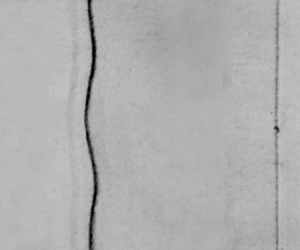Article contents
Attenuation of perturbation growth of single-mode SF6–air interface through reflected rarefaction waves
Published online by Cambridge University Press: 15 August 2023
Abstract

Attenuation and even freeze-out (amplitude growth stagnation) of the perturbation amplitude growth of a shocked SF $_6$–air interface are first realized in shock-tube experiments through reflected rarefaction waves, which produce reverse baroclinic vorticity offsetting the vorticity deposited by the shock. A theoretical model is constructed to predict the perturbation growth after the impact of rarefaction waves, and seven possibilities of amplitude growth are analysed. Experimentally, a planar air–helium interface is used to produce reflected rarefaction waves. Through changing the perturbation wavelength and the time interval of two impacts, five experiments with specific initial conditions are carried out, and three different possibilities of perturbation growth attenuation are realized.
$_6$–air interface are first realized in shock-tube experiments through reflected rarefaction waves, which produce reverse baroclinic vorticity offsetting the vorticity deposited by the shock. A theoretical model is constructed to predict the perturbation growth after the impact of rarefaction waves, and seven possibilities of amplitude growth are analysed. Experimentally, a planar air–helium interface is used to produce reflected rarefaction waves. Through changing the perturbation wavelength and the time interval of two impacts, five experiments with specific initial conditions are carried out, and three different possibilities of perturbation growth attenuation are realized.
JFM classification
- Type
- JFM Rapids
- Information
- Copyright
- © The Author(s), 2023. Published by Cambridge University Press
References
- 10
- Cited by



